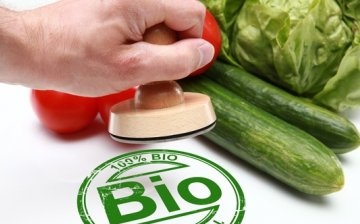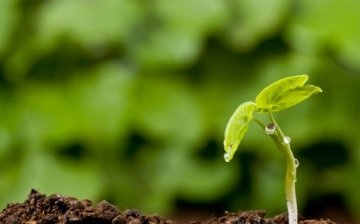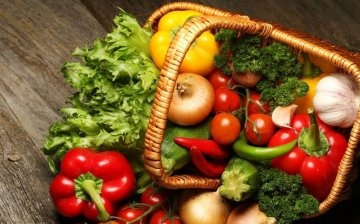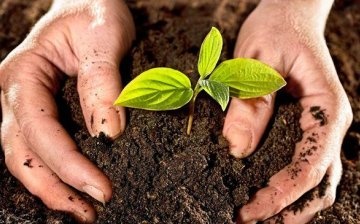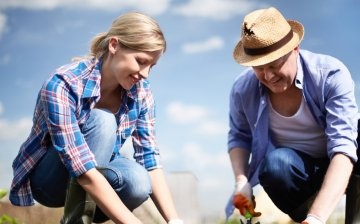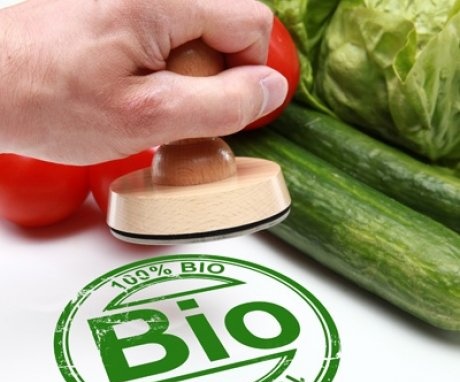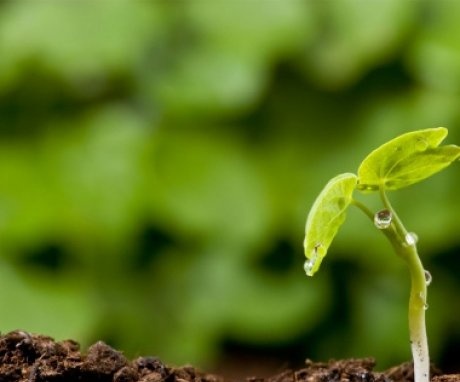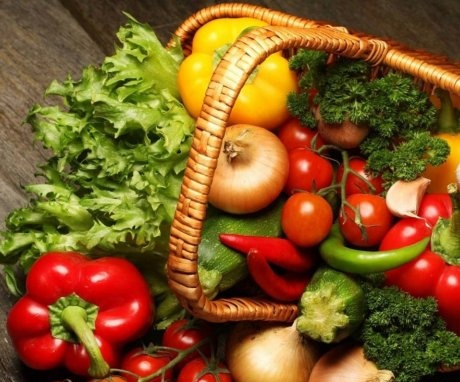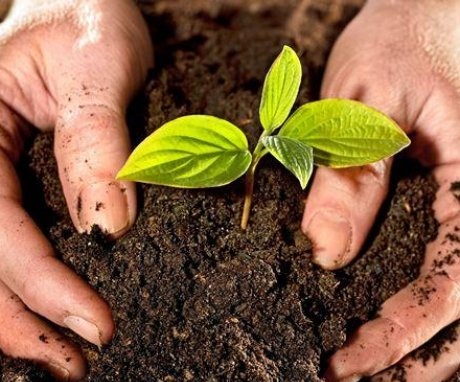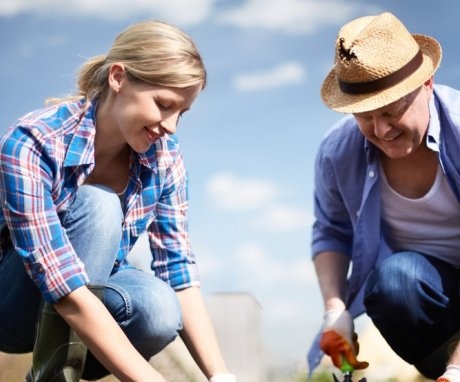Biodynamic farming: principles, rules and advantages of the method
Recently, anything that has the root "bio" is very popular. In the environment of gas pollution and chemical diversity, everything that is environmentally friendly, natural and healthy is more and more appreciated. From the same considerations, adherents of biodynamic agriculture proceed, who primarily strive to grow a healthy and tasty crop, while maintaining the structure and soil composition.
Content:
- Biodynamic agriculture - description, history of origin
- Principles and rules of biodynamic farming
- Advantages and main difficulties of the method
- The concept of "living soil" - what is it
- Biodynamic calendar and biodynamic drugs
Biodynamic agriculture - description and history of origin
At the beginning of the 20th century, the chemicalization of agriculture began to be actively promoted. In pursuit of a rich and outwardly beautiful crop, various chemicals, pesticides, pesticides, mineral fertilizers, the soil was mercilessly exploited and impoverished by constant crops, artificially fertilized for the sake of a new harvest.
At this time, the teachings of Rudolf Steiner appeared, whose lectures laid the foundation for the theory of biodynamic agriculture. His students developed his teaching, looking for new ways of natural cultivation of cultivated plants without harming the plants themselves, soil, animals, insects.
Currently, biodynamic agriculture has begun to gain momentum in Russia. In Europe, Australia, it is already quite popular. Using this technology, you can organize both a whole farm and a small plot. According to the adherents of this doctrine, modern methods of land cultivation, the use of various chemicals, the race for a large quantity (not quality) of the crop lead to destructive processes in the soil and deterioration of the health of people who consume the fruits of such land.
The word "biodynamic" has two roots - "bio" and "dynamis", which means life and movement, development.
In other words, for the adherents of this theory, life is at the core, and the soil is also viewed as a living being that can be traumatized by mishandling.
Biodynamic agriculture is not just a method of cultivating land and growing crops, it is a whole worldview, a way of life and a completely different view of nature. Plants grown in this way, according to the followers of this theory, become more sensitive to signals from the Cosmos, and the fruits grown on such soil are not only tasty and healthy, but also filled with special energy.
The doctrine is based on the rejection of any chemicals in the cultivation of crops. Everything fertilizers only organic, and methods of dealing with pests exclude the use of poisons. Proponents of biodynamic farming believe that trying to grow as much crop as possible and squeeze the most out of the soil is the wrong way.It is much more valuable to get a useful, ecological clean harvest, while being in harmony with the surrounding nature, living and inanimate.
Principles and rules of biodynamic farming
Biodynamic farming requires compliance with certain rules that exclude aggressive effects on the soil. It is important to take into account not only your needs, but also to perceive the entire surrounding world as a single organism: plants (even those that we consider weeds), inanimate nature (stones, buildings, ponds), insects, microorganisms, earth - everything must be in harmony.
Basic rules for biodynamic farming:
- You don't need to feed the plants, but the soil. For feeding soils use only organic fertilizers, namely compost... For the protection and nutrition of plants, I use biodynamic preparations that can be made independently. Various organic residues such as straw, food residues from the kitchen are used as fertilizers, sawdust etc. Properly fertilized soil will provide sufficient nutrition for the plants, and they, in turn, will delight you with a good harvest.
- It is necessary to take into account the relationship of all living and non-living things. Only full awareness that everything is connected will allow you to grow a truly healthy and tasty harvest... Plants, animals, insects, soil, air influence each other, and even cosmic bodies exert their influence. All procedures landing, harvesting is carried out taking into account these factors.
- Diversity must be observed. The goal of biodynamic farming is to create a whole world in miniature, which is impossible if the entire plot is planted, for example, potatoes... Various plants must grow and coexist on the soil, which will influence each other. For example, onion and garlic scare away pests... It is also important to consider which plants have grown on the site before, and alternate them correctly.
- Participants in the living world cannot be excluded. In biodynamic agriculture, maximum naturalness, closeness to natural conditions, nature is important. Not only plants are important, but also insects, animals, for example, hedgehogs, which will help get rid of slugs, birds for which you can build feeders. Not all weeds that we used to consider harmful are. Some create favorable conditions for cultivated plants, protecting from the scorching sun or pests.
Advantages and main difficulties of the method
Biodynamic farming has many benefits for humans. This is not only a concern for nature and soil, but also a significant benefit for the owner of such a site.
The benefits of biodynamic farming:
- Health care. Supporters of biodynamic agriculture are undoubtedly in the category of people who welcome a healthy lifestyle. They strive to get healthy fruits, take care of their health and the health of their families. The principle of biodynamic farming is to shorten the land-cultivator-buyer chain. A person grows and receives fruits himself, in the quality and safety of which he is completely sure.
- Saving energy and money. Biodynamic farming involves a minimum of human intervention. The farmer saves tons of money on chemicals and mineral fertilizers, using only organic substances and even garbage, and also saves own energy and time on plowing the land, weeding, etc. Despite the fact that the adherents of such farming do not strive to get the maximum yield, even a small plot cultivated in this way is able to feed 3-4 people, which is very profitable.
- Better harvest. Fruits grown by biodynamic cultivation are of higher quality and tastier than plastic-looking, pesticide-treated fruits and vegetables.This is precisely the goal of farmers - to improve the quality characteristics of fruits, to get a more useful and tasty harvest.
For those who have mastered this technique, there is nothing difficult in such agriculture; on the contrary, there is no need to spend extra energy on interfering with the process of growing plants. However, beginners can face some difficulties. For example, biodynamic farming is petty-minded and requires a global view of the world. At first, it will not be easy to take into account all the levels and structures of the natural world at once, follow the biodynamic calendar, take into account the movement of heavenly bodies, and so on. However, over time, the process will get better, and all these things will be done intuitively.
It is not always easy for a person to refuse such benefits of civilization as quick poisons and drugs.
Enough once spray and you can not worry about the harvest, get rid of everyone at once pests... But over time, you can see that plants themselves are able to cope with this with the help of the same organic matter.
The concept of "living soil" - what is it
Adherents of the theory of biodynamic agriculture treat soil as a living being. The soil is inhabited by various microorganisms, insects and other living things that provide food for plants.
Biodynamists believe that:
- Like any living organism, the soil can thank the one who treats it appropriately, and reveal its potential, and can also become impoverished and sick if improperly, roughly handled.
- The soil should not be subjected to deep moldboard plowing, which overturns large layers of soil. So rude treatment soil violates its integrity. Only gentle loosening of the top layer is allowed to enrich the soil with oxygen.
- The soil needs to be fed, or rather to feed its inhabitants, which will then provide the plants with the necessary nutrients. In biodynamic farming, the soil is fed exclusively with biodynamic compost, which is based on organic matter found anywhere and often thrown away as waste.
- Bare earth is not its normal state in nature, therefore biodynamists strive not to leave the soil uncovered. Either something grows on it, or else it mulch, or both. Mulching the soil is in many ways useful, it protects against freezing, and also slows down growth weeds, allows you to retain moisture in the soil. You can use regular cut grass as mulch. It will not only perfectly allow air and moisture to pass through, but also protect in severe frosts and serve as protection for insects.
- To properly care for the soil, you need to know its characteristics and composition. Treatment, fertilization, and even the choice of plants for landing... So, for example, sandy soils quickly warm up and cool quickly, that is, in the spring you can start planting plants earlier, but in winter the soil will freeze more, it needs to be mulched. Clay soil warms up and cools more slowly, but tends to retain water, so you need to be careful with watering and avoid stagnant water.
Biodynamic calendar and biodynamic drugs
The biodynamic calendar should not be confused with the lunar calendar. Biodynamists take into account not only the position of the moon, but also other luminaries, as well as the zodiacal constellations. The first to combine all these items in the calendar was Maria Thun. You can get such a calendar in the biodynamic community.
According to this calendar, all soil works are carried out not only by seasons and months, but even during the day.
So, for example, it is believed that in the morning hours there is an exit, and in the evening the earth is inhaled, that is, in the morning the energy is released outside, and in the evening it is taken in. For this reason, it is advisable to harvest in the morning, but it is better to plant plants in the afternoon.
Maria Thun's calendar is divided into:
- root days
- leaf days
- flower days
- days of the fetus
- unfavorable days
Maria Thun noticed that this or that culture, planted with a difference of only a few days, grows and bears fruit in different ways. Plants in a biodynamic economy are very sensitive to the movements of celestial bodies, therefore, all possible factors should be taken into account when sowing. On root days, root plants such as potatoes, radish, carrot... On leaf days, you need to plant leaf crops, for example, salads, plant flowers on flower days, and other plants, legumes, on fruit day, pumpkin, berries, fruits, etc.
You can make biodynamic drugs yourself. Some believe that they are undoubtedly useful for plants, while others see in these preparations only a psychological meaning and the belief that they will help.
Various fertilizers, according to biodynamicists, are not just a set of nutrients, they are a real conductor between the earth and the Cosmos, so the preparation of such preparations requires adherence to certain rules. For example, a preparation called horny manure takes a long time to prepare. Cow dung is placed in a horn, and during the winter this dung goes through a long transformation path, after which it can be used as an energy amplifier for the Earth. All biodynamic preparations are aimed at increasing the nutritional properties of plants, at nourishing the soil and maintaining its optimal composition.
Useful video - Organic farming:




